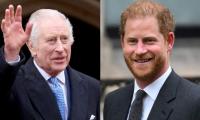WASHINGTON/LONDON: Top central bankers in Europe and the US have moved closer to declaring victory over the biggest inflation surge for a generation, with new data giving policymakers confidence they can cut rates by the summer.
On Friday, US jobs growth figures for December and January were downgraded sharply, cementing investors’ expectations of a rate cut by June, while eurozone data showed wage and profit growth easing.
Federal Reserve chair Jay Powell said on Thursday that the US central bank was “not far” from having the confidence to start lowering borrowing costs.
European Central Bank president Christine Lagarde said policymakers had “begun discussing the dialling back of our restrictive stance”, celebrating “good progress towards our inflation target”, even if “we are not there yet”.
“I found them very dovish in sync,” Ludovic Subran, chief economist at insurer Allianz, said of Powell and Lagarde. “The question now is whether the
Fed will wait to cut rates until September.”
Friday’s US data showed that the economy added 275,000 jobs last month, beating forecasts, but big downgrades to previous figures bolstered expectations that the first cut could come by June.
In the eurozone, fourth-quarter data showed unit labour costs and profit margins rising by a slower rate, easing fears that companies are driving up inflation by passing on higher labour costs via aggressive price rises.
Markets had scaled back their bets on a string of interest rate cuts in 2024 as European inflation proved stickier than expected and the US labour market remained surprisingly robust.
But recently the tables have turned. Markets are now pricing up to four 0.25 percentage point rate cuts by the Fed and ECB this year from closer to three cuts at the start of the month. The Bank of England is expected to make its first cut in the summer as governor Andrew Bailey notes “encouraging signs” on inflation.
“Now you’ve got the ECB saying April is on the cards for a cut and if not definitely by June,” said William Vaughan, associate portfolio manager at Brandywine Global.
a distinct change in tone from the messaging last month and weaker wage data today [Friday] supports that dovish stance.”
On Friday a trio of ECB rate-setters boosted that view. French central bank head François Villeroy de Galhau said a rate cut was likely in April or June. Finland’s central bank boss Olli Rehn said the risks of cutting too soon had “significantly decreased”.
Even Austria’s hawkish central bank governor Robert Holzmann said a change in rates “may be in preparation”.
“What changed this week is that they seem to be regaining confidence in their own models and forecasts, which is taking them closer to the first cut,” said Frederik Ducrozet, head of macroeconomic research at Pictet Wealth Management.
Not all of the hawks are convinced. In the US Neel Kashkari, president of the Minneapolis Fed, and Raphael Bostic, who heads the Atlanta Fed, think
the strength of the US economy means the Fed does not need to cut rates as much as policymakers thought was
necessary in December, when they forecast three moves over the course of this year.
Joachim Nagel, the head of Germany’s Bundesbank, acknowledged “the probability is increasing we could see interest rate cuts before the summer break”, but warned against falling “into euphoria too early”.
A representational image of a dolphin. — AFP/FileKARACHI: Bank Alfalah has partnered with WWF-Pakistan and committed...
A representational image of the State Bank of Pakistan museum building. — AFP/FileKARACHI: The State Bank of...
A woman picks a gold earring at a jewellery shop on May 24, 2023. — ReutersKARACHI: Gold prices decreased by Rs800...
The Competition Commission of Pakistan building can be seen in this image. — APP/FileKARACHI: The Competition...
A Chinese-made Haval H6 SUV is seen on Reforma Avenue in Mexico City. — AFP/File MEXICO CITY: The growing...
A representational image of an invoice. — PexelsLAHORE: As Pakistan grapples with controlling under-invoiced...







